We can all learn chords and pick out notes by ear. But eventually our lack of musical knowledge can really hold us back. Learning key scales is crucial to mastering your craft. Today’s lesson will focus on D minor chords and the music theory around them.
Let’s dive into today’s lesson!
D Minor Chords
The D minor chords are the chords that are built using the notes in the D minor scale; D – E – F – G – A – Bb – C.
What are the chords in the key of D minor?
The chords in the key of D minor are:
- Dm (i)
- Edim (ii°)
- F (III)
- Gm (iv)
- Am (v)
- Bb (VI)
- C (VII)
*diminished chords (dim, for short) are denoted by the degree symbol (ex: B° = Bdim) The formula for a diminished chord is I – bIII – bV.
What are the notes of the D Minor scale?
The formula for finding the notes in the D minor scale, or any minor scale, is:
| I (Tonic) | II (Supertonic) | III (Mediant) | IV (Subdominant) | V (Dominant) | VI (Submediant) | VII (Subtonic) |
| Whole | Half | Whole | Whole | Half | Whole | Whole |
| D | E | F | G | A | Bb | C |
Whole – Half – Whole – Whole – Half – Whole – Whole
You start at the D note and move up a whole step to E, then a half step to F, then another whole step to G, and so on. You will end up with these notes:
- D to E is a whole step
- E to F is a half step
- F to G is a whole step
- G to A is a whole step
- A to Bb is a half step
- Bb to C is a whole step
- C back to D is a whole step
Relative and Parallel Keys
A parallel key is a key that shares the same tonic, or root note. For example, the parallel key to D minor is D major, since they both share the same D tonic note. The differences between the two parallel keys are the II, VI, and VII notes.
If you are starting in the minor key you would sharpen those notes to make it a major key. For example, we already know the notes of D minor are
- D (I)
- E (II)
- F (III)
- G (IV)
- A (V)
- Bb (VI)
- C (VII)
If we sharpen the III, VI, and VII to turn the key major, it will look like this:
- D (I)
- E (II)
- F# (III)
- G (IV)
- A (V)
- B (VI)
- C# (VII)
The relative key is even easier. A relative key is a key that shares ALL of the same notes but has a different tonic, or root note. The relative major for D minor is F major. We already know the notes of Dm are D – E – F – G – A – Bb – C.
To get the relative key you just start on the root of the new key. For example:
- F (I)
- G (II)
- A (III)
- Bb (IV)
- C (V)
- D (VI)
- E (VII)
See? All the same notes, just a different starting position. Learning the parallel and relative keys is a great way to knock out memorizing multiple keys at one time.
For a good example of relative keys you can check out our G major chords and E minor chords lessons.
Remember:
- Parallel Key means you either sharpen or flatten the III, VI, & VII notes but they share the same tonic.
- Relative Key means they share the same notes but each have a different tonic.
How do I find D Minor chords?
Now that we know everything there is to know about about the D minor scale, we can use that knowledge to start building chords (don’t worry, chord diagrams are coming up).
Chords, at their base, are made up of what we call triads. If you want to build a major chord, you use the major triad formula I – III – V. For a minor chord, you use the minor triad formula I – bIII – V. There are modifications you can make to build larger and different sounding chords, but triads are the foundation for them all.
To find the I – III/bIII – V notes you have to map them out.
| I | II | III | IV | V | VI | VII |
| D | E | F | G | A | Bb | C |
To build chords using the D minor scale you will only use these notes. The formula to figure out the chords is i – ii° – III – iv – v – VI – VII.
So the chords of the key of D minor will look like:
| i | ii° | III | iv | v | VI | VII |
| Dm | Edim | F | Gm | Am | Bb | C |
You may find it odd to see BOTH minor AND major chords in a minor chord scale. This is bound to happen when you are limited in the notes available for chord building. If a note is not available, you cannot use it to make the chord.
For example, the key of Dm has an F major chord instead of an F minor chord. To build an F minor chord you would need the notes F (I) – Ab (bIII) – C (V). Since there is not Ab in the key of D minor we have to use the A note, which makes F minor an F major.
The other outlier in these chords is the diminished chord. You can recognize them by the degree, or °, symbol next to them. To build a diminished chord you use the formula I – bIII – bV. So the Edim, or E°, chord would be E – G – Bb.
D Minor Chords (Diagrams)
You now possess the knowledge to build these chords on your own. But, if you want some quick and easy diagrams (who doesn’t want that), you’re in the right place! Here are D minor chord diagrams as well as 7th chords for some extra flavor.
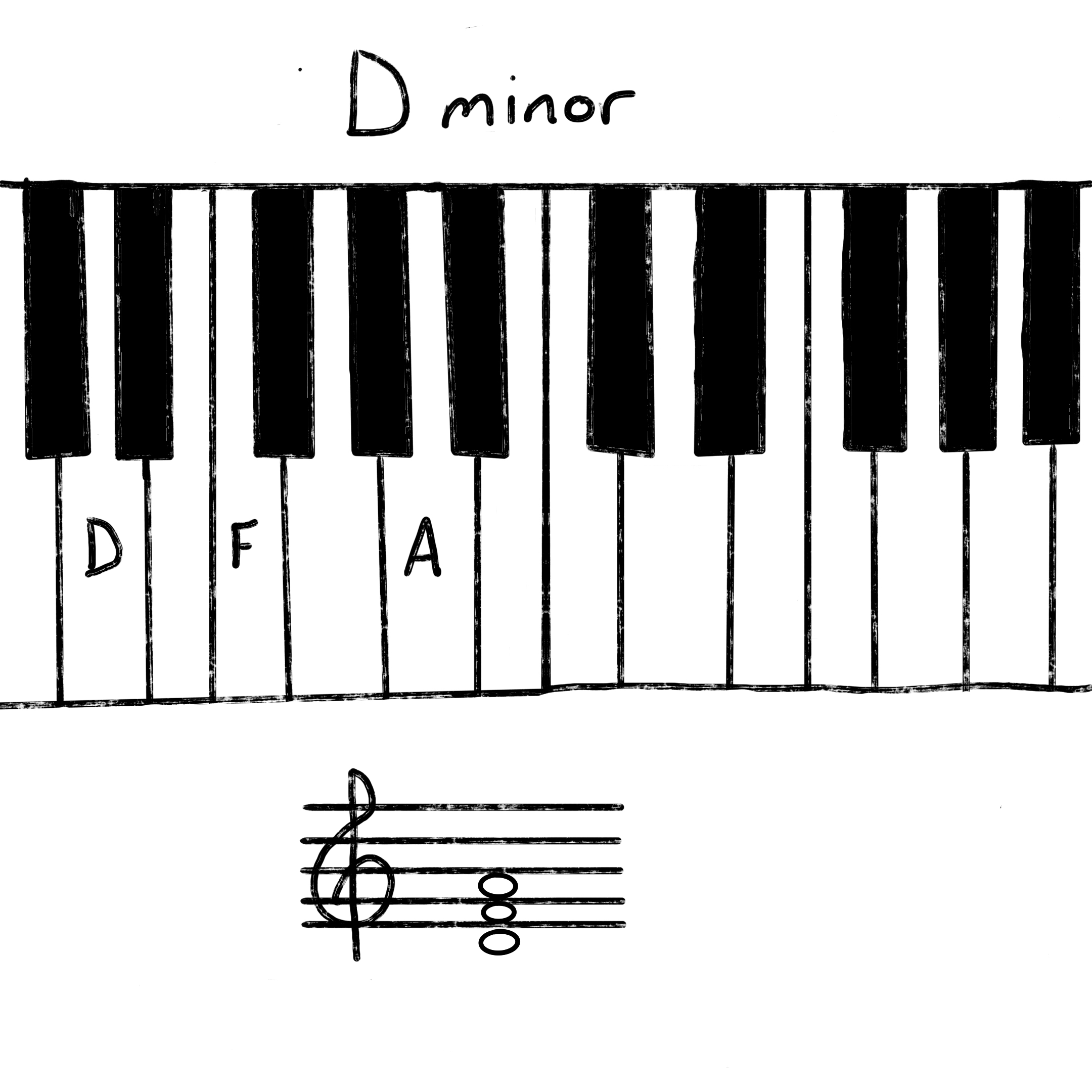
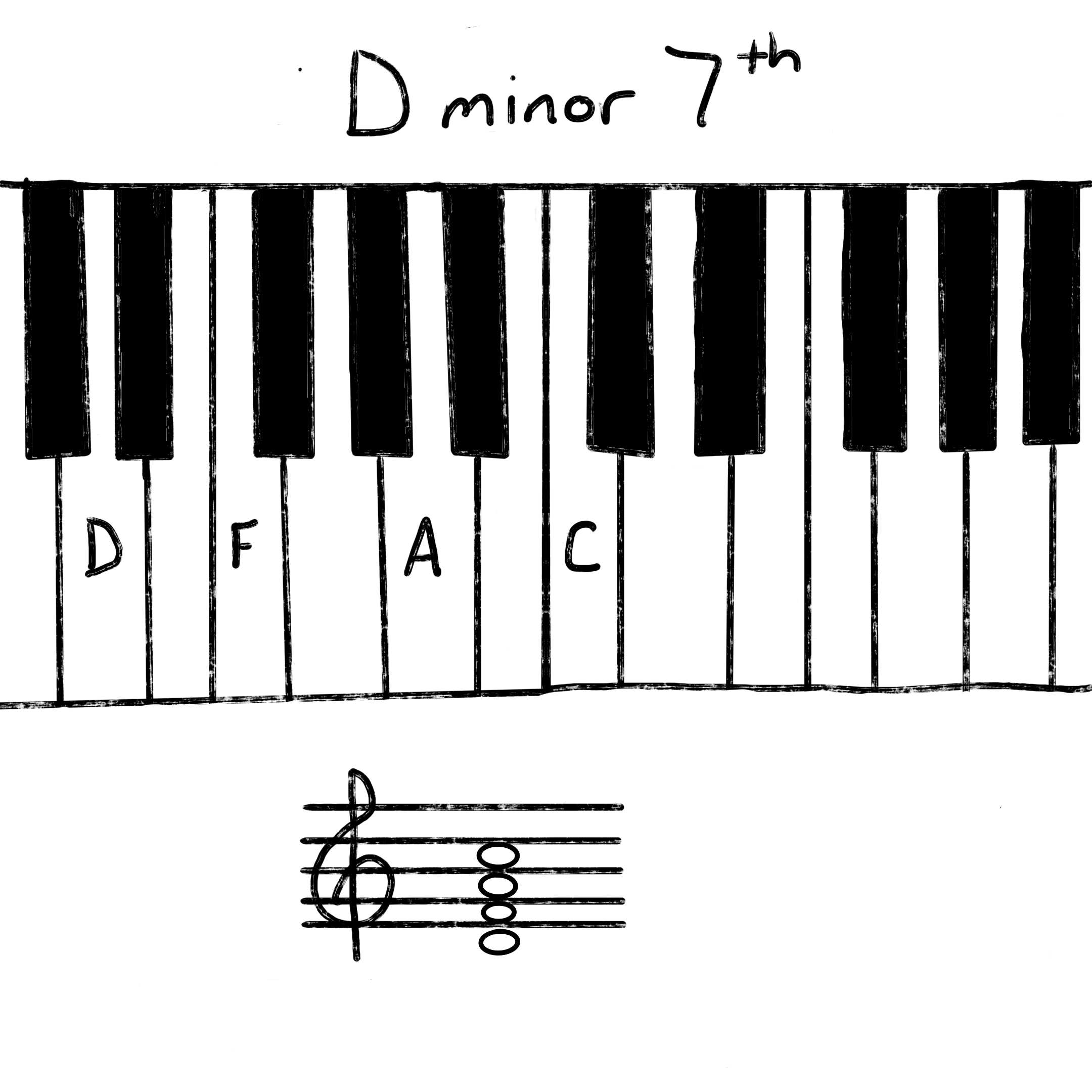
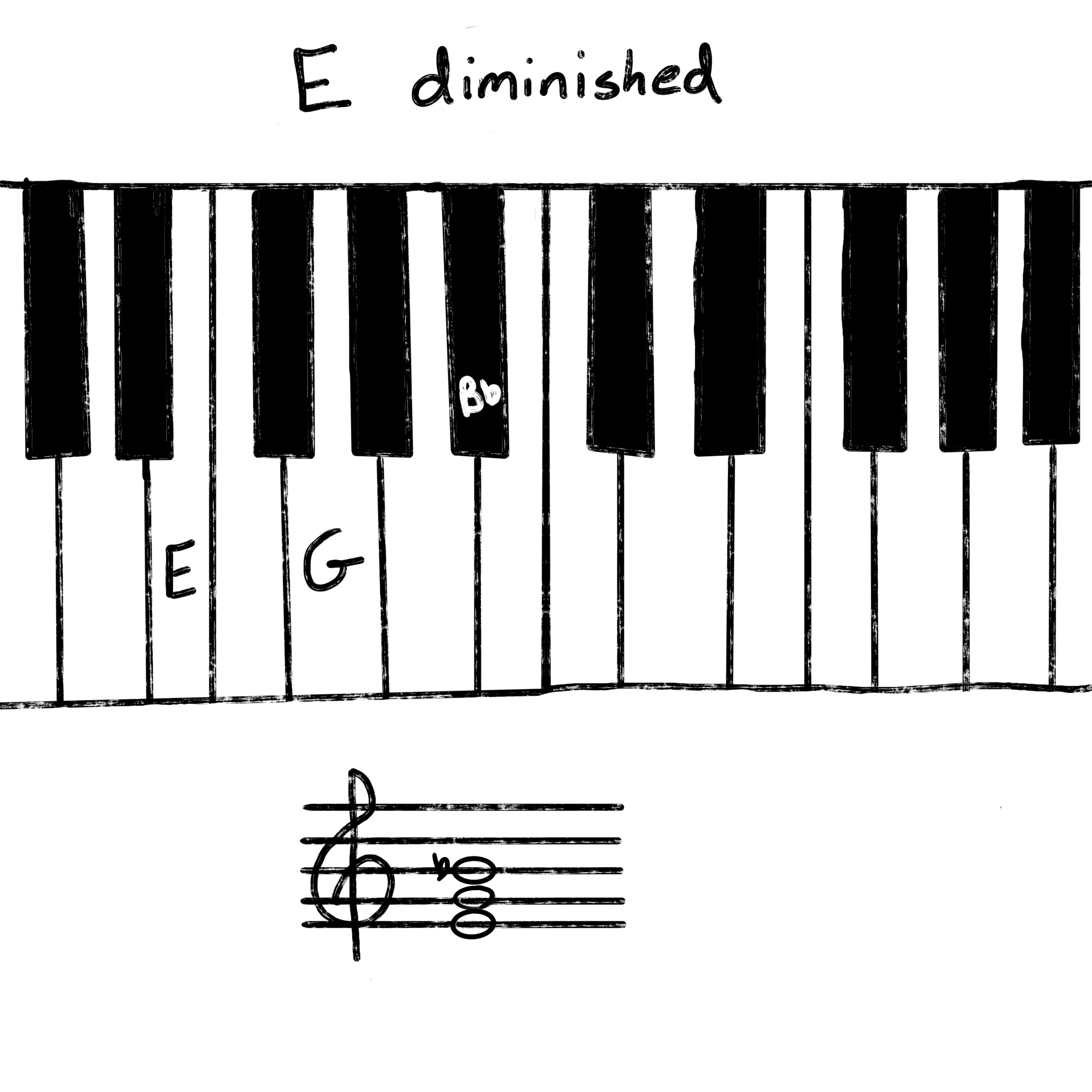
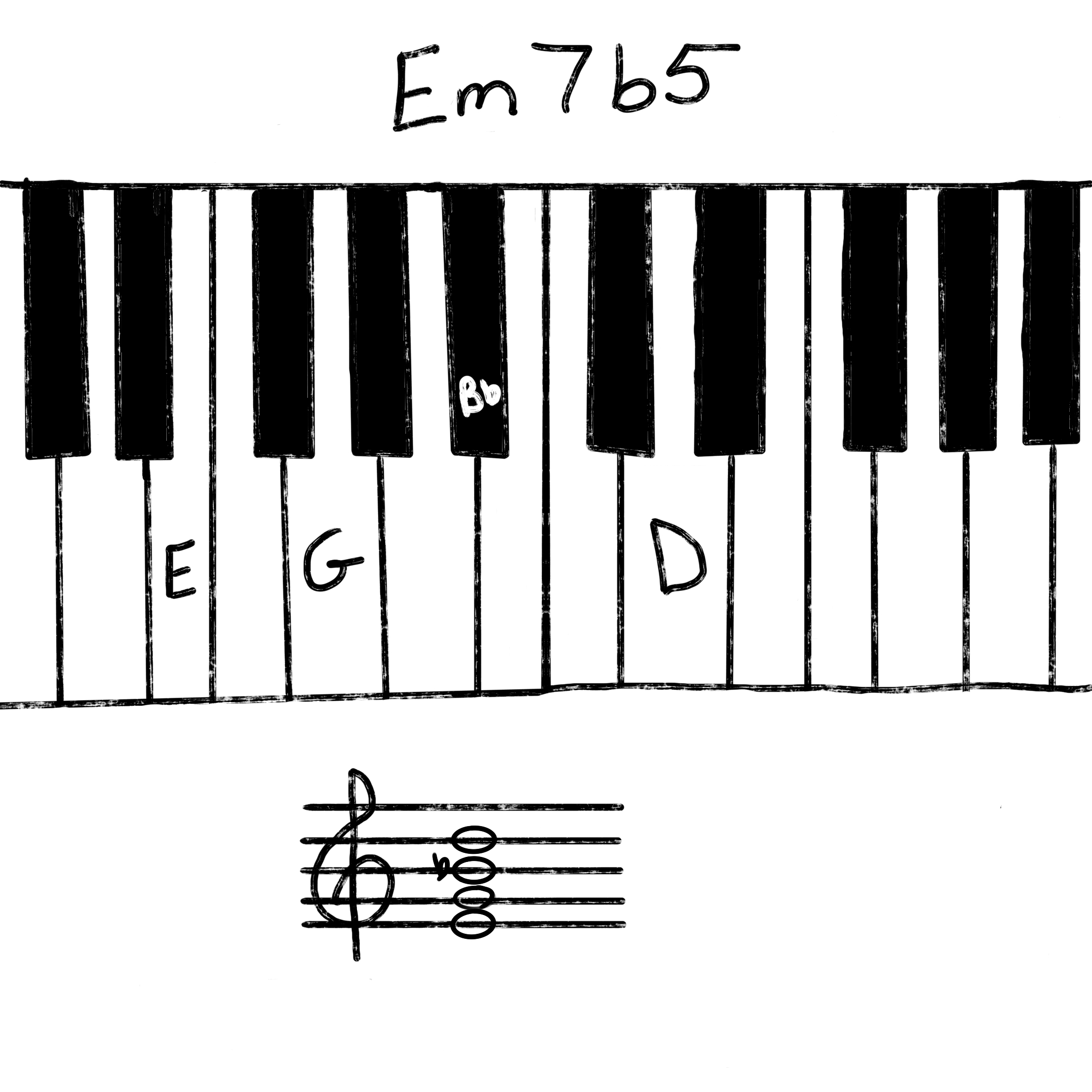
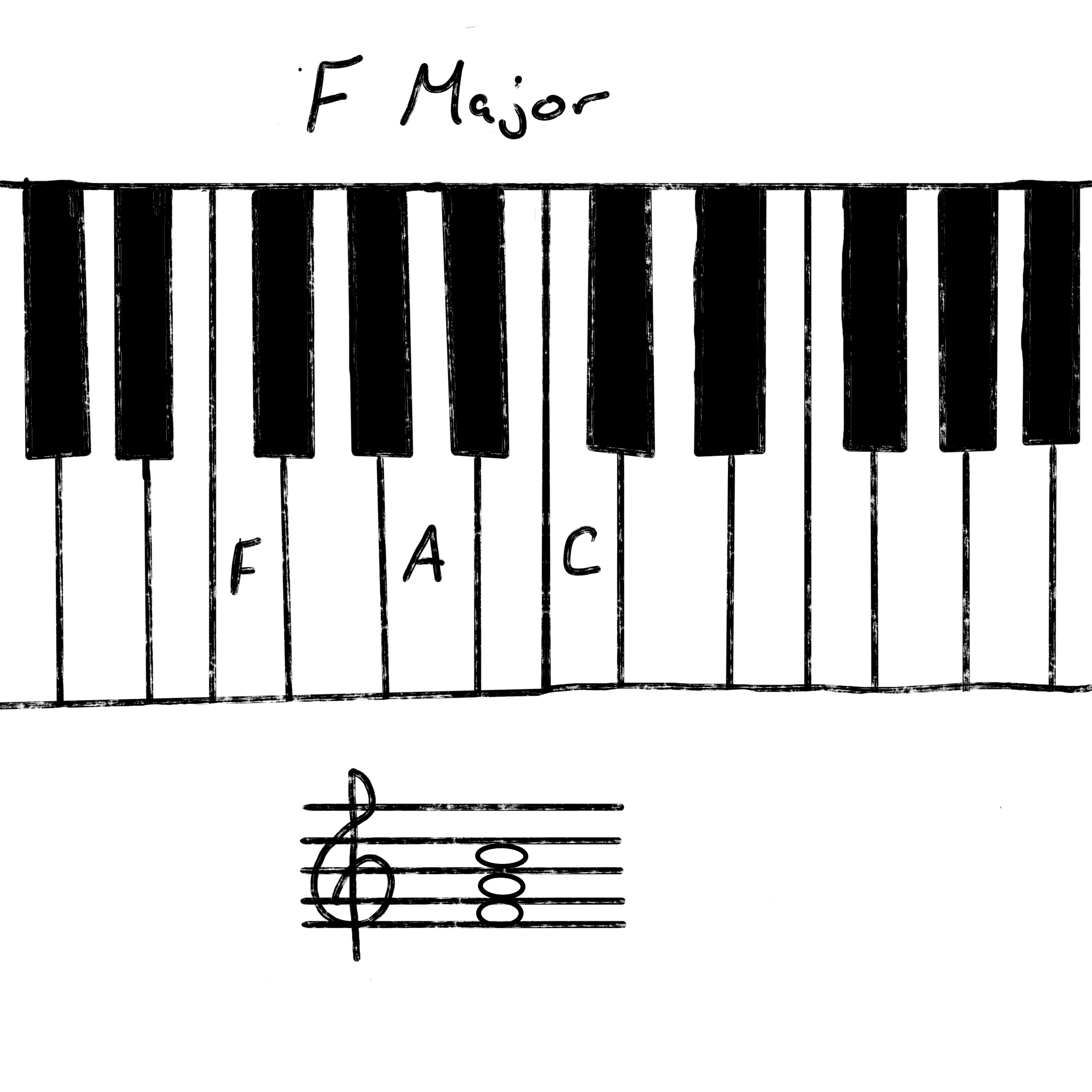
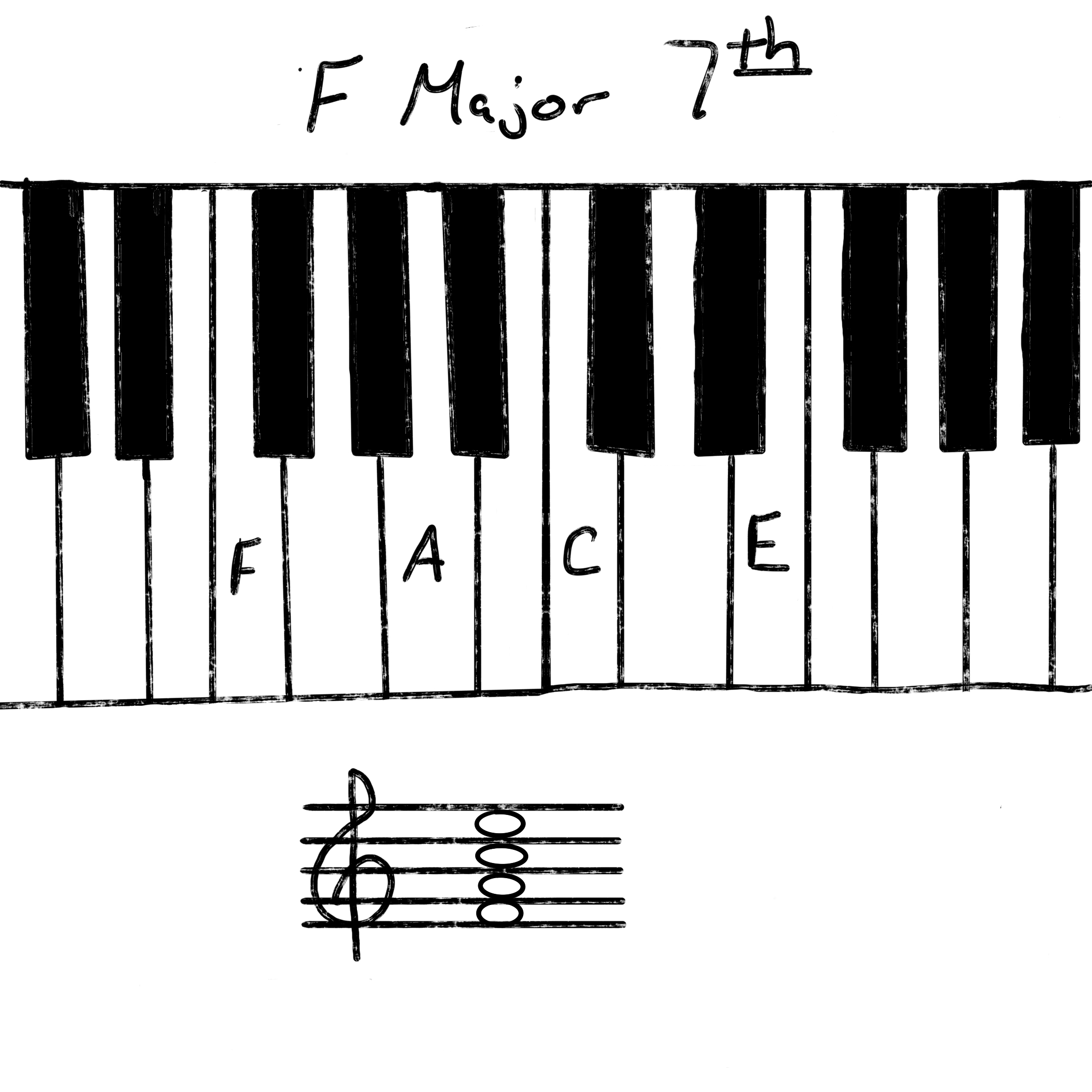
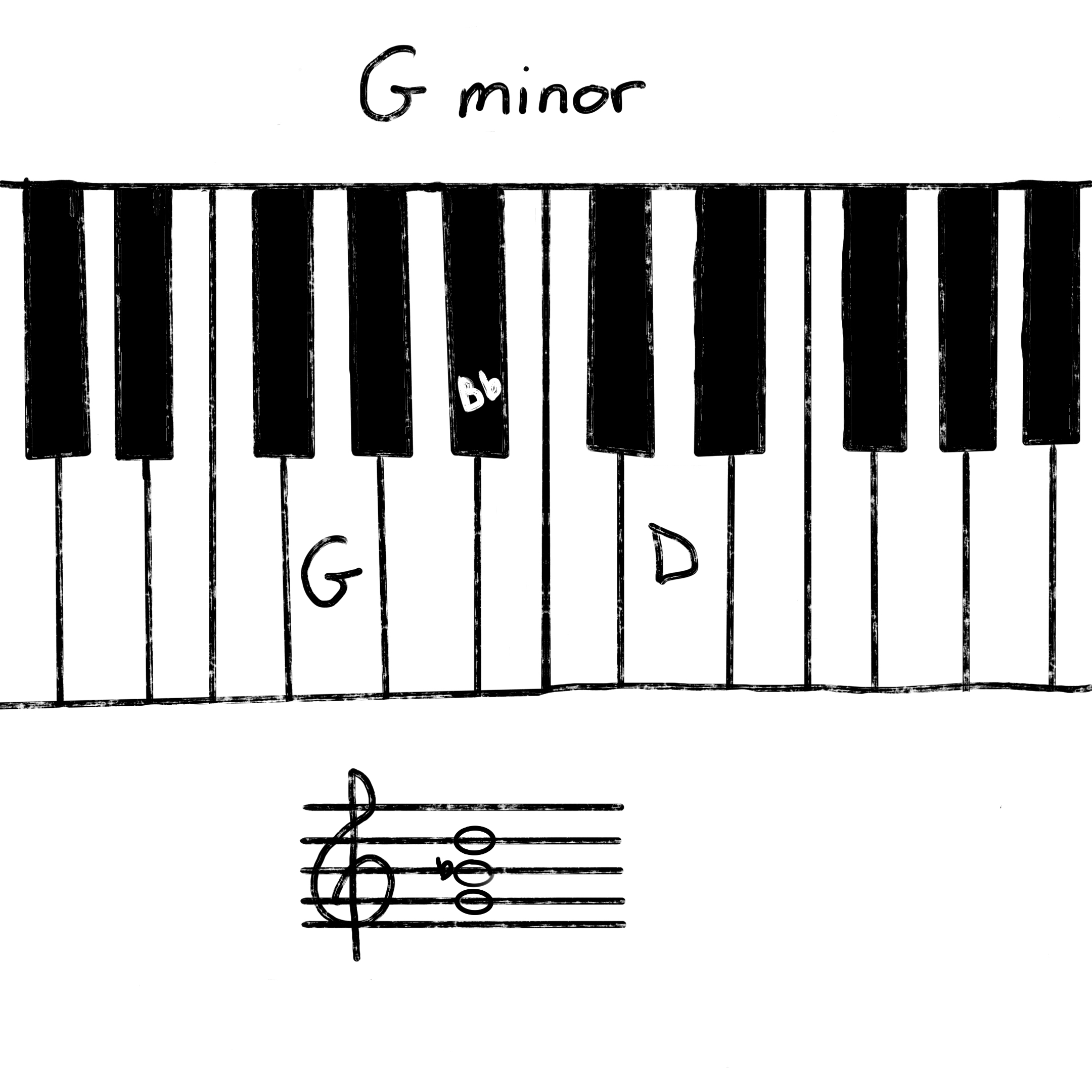
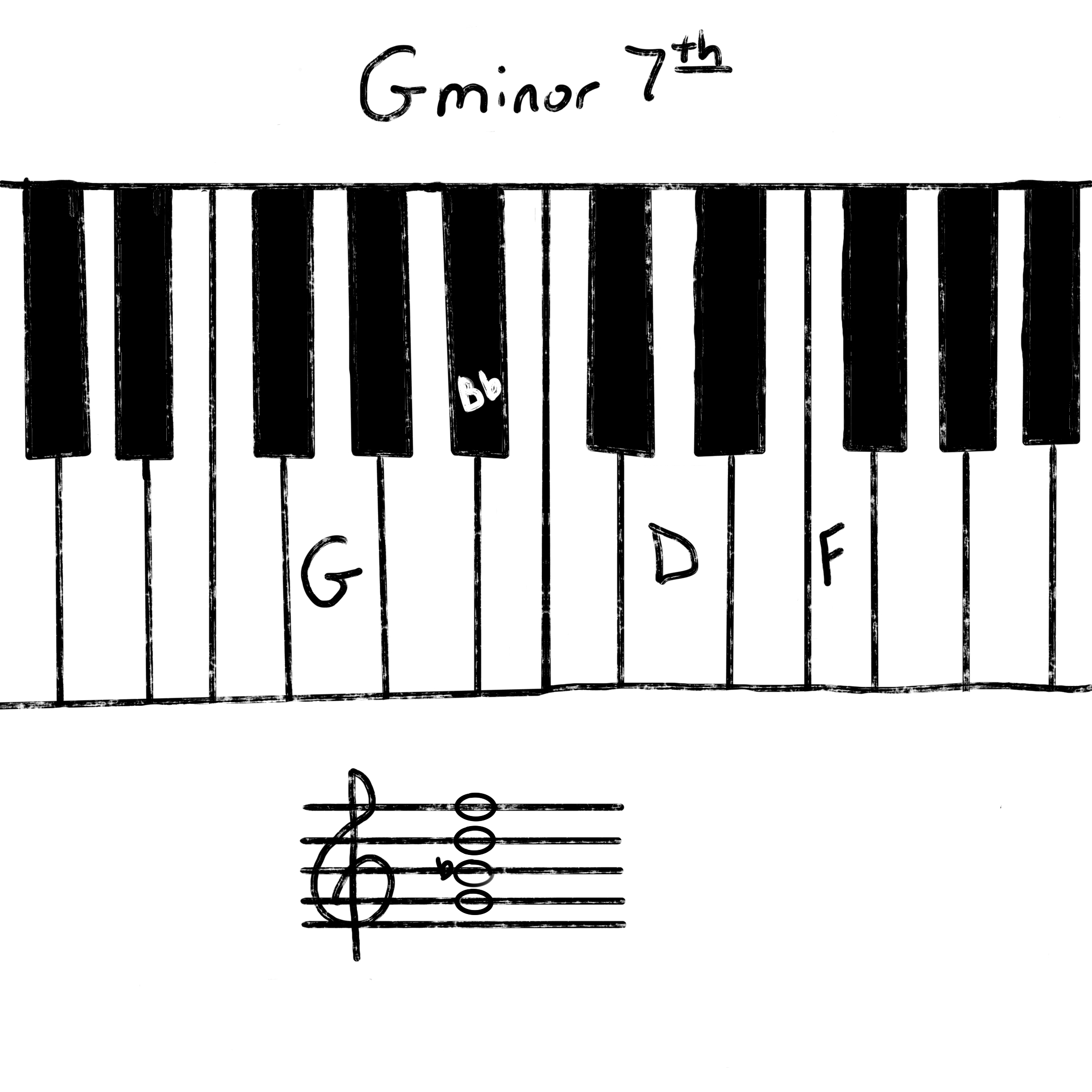
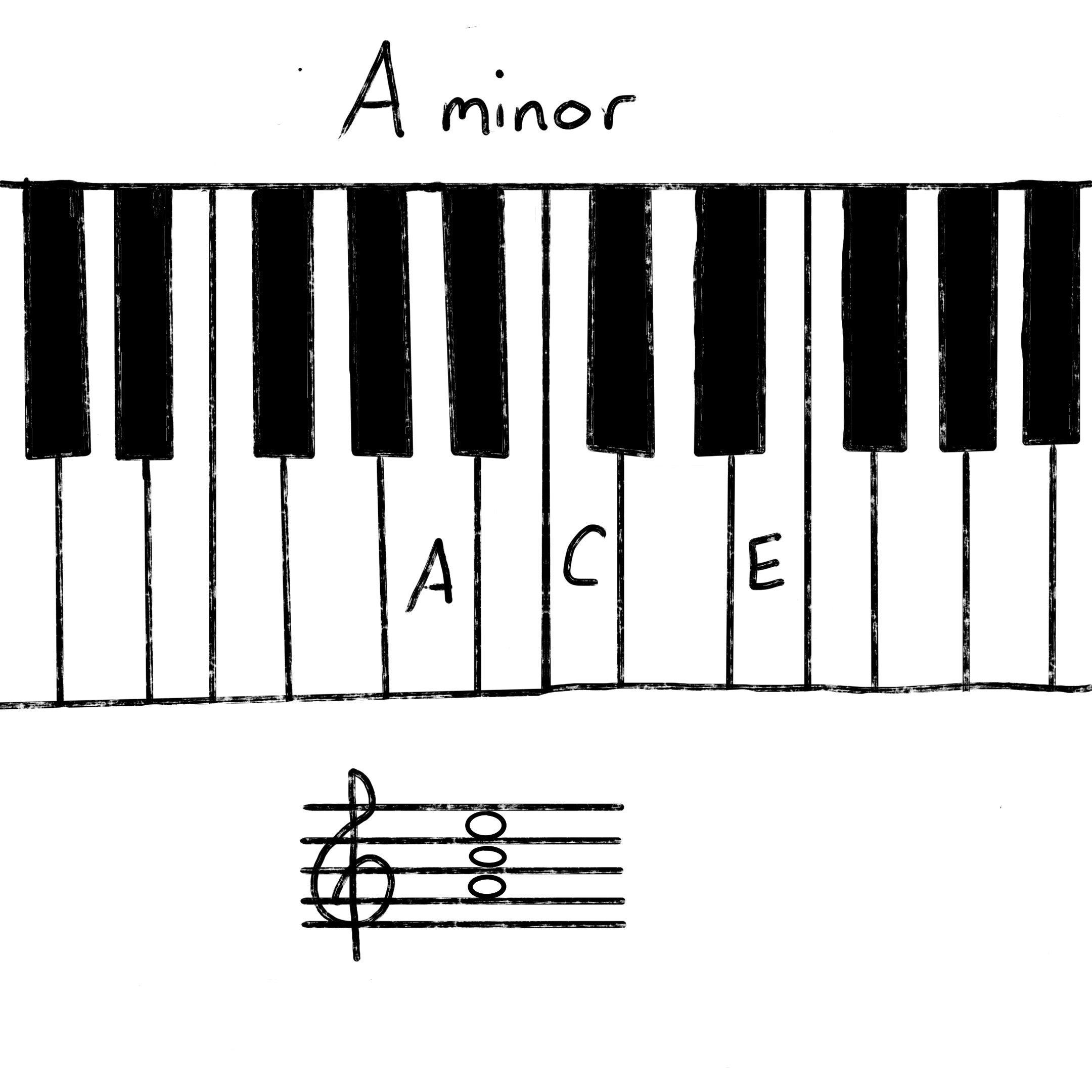
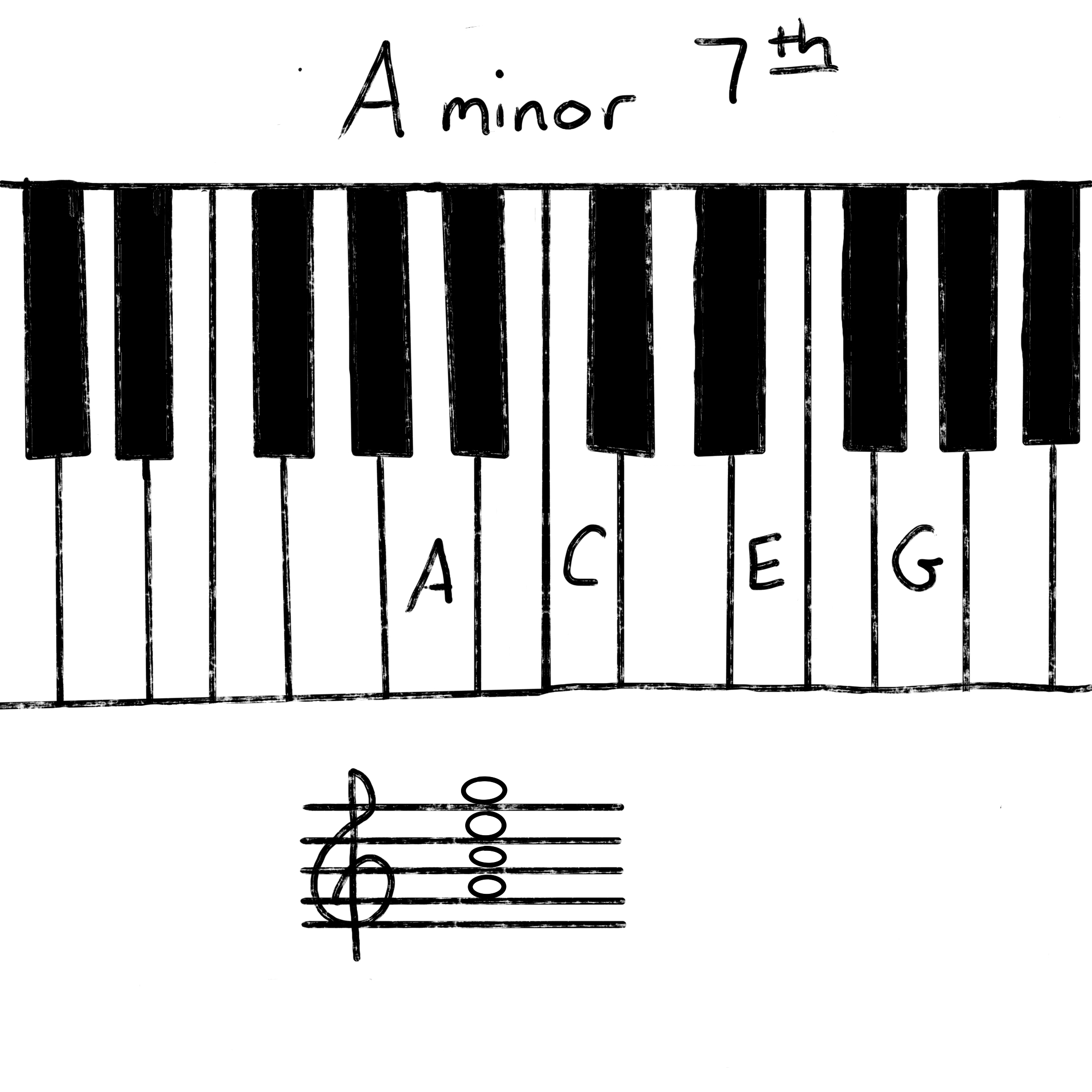
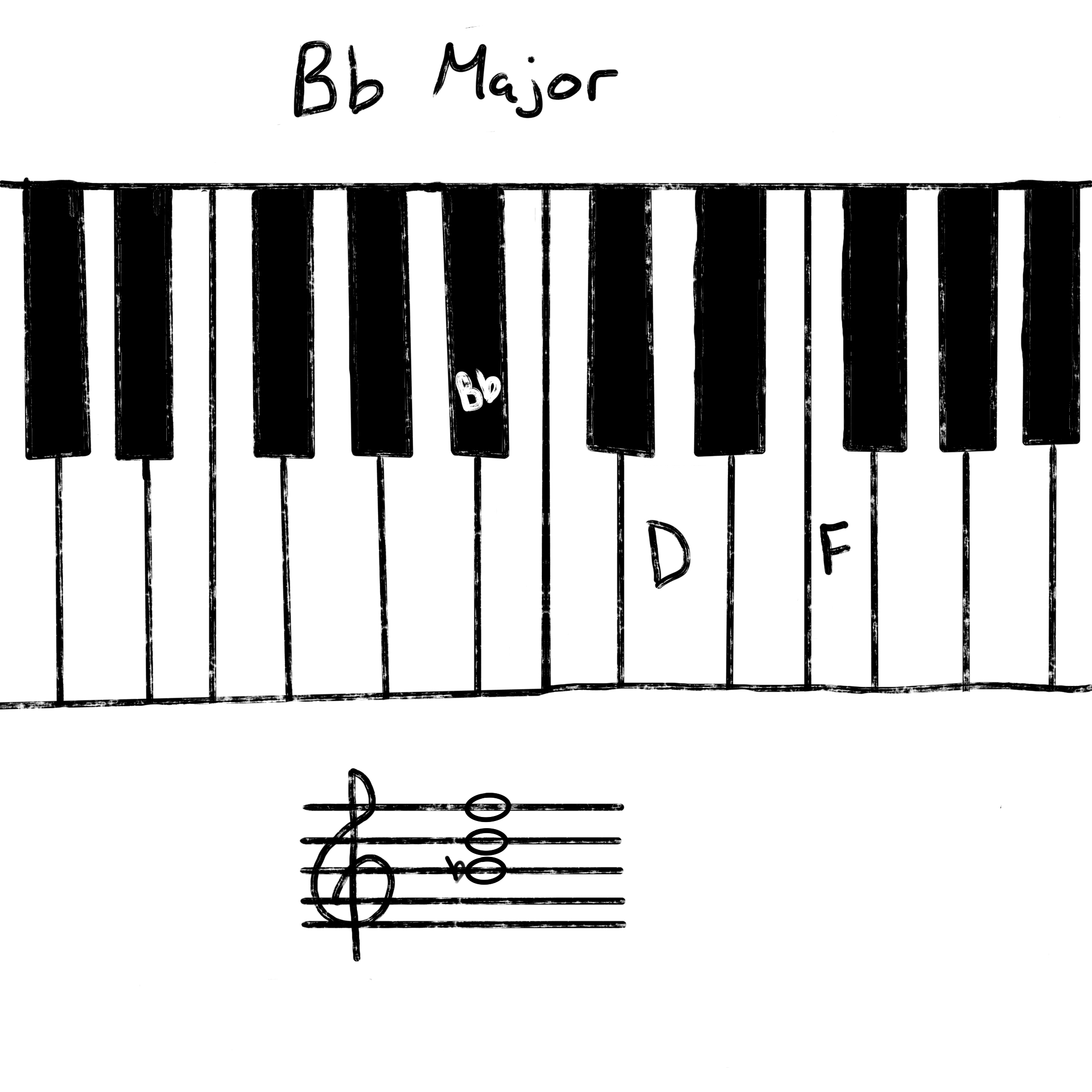
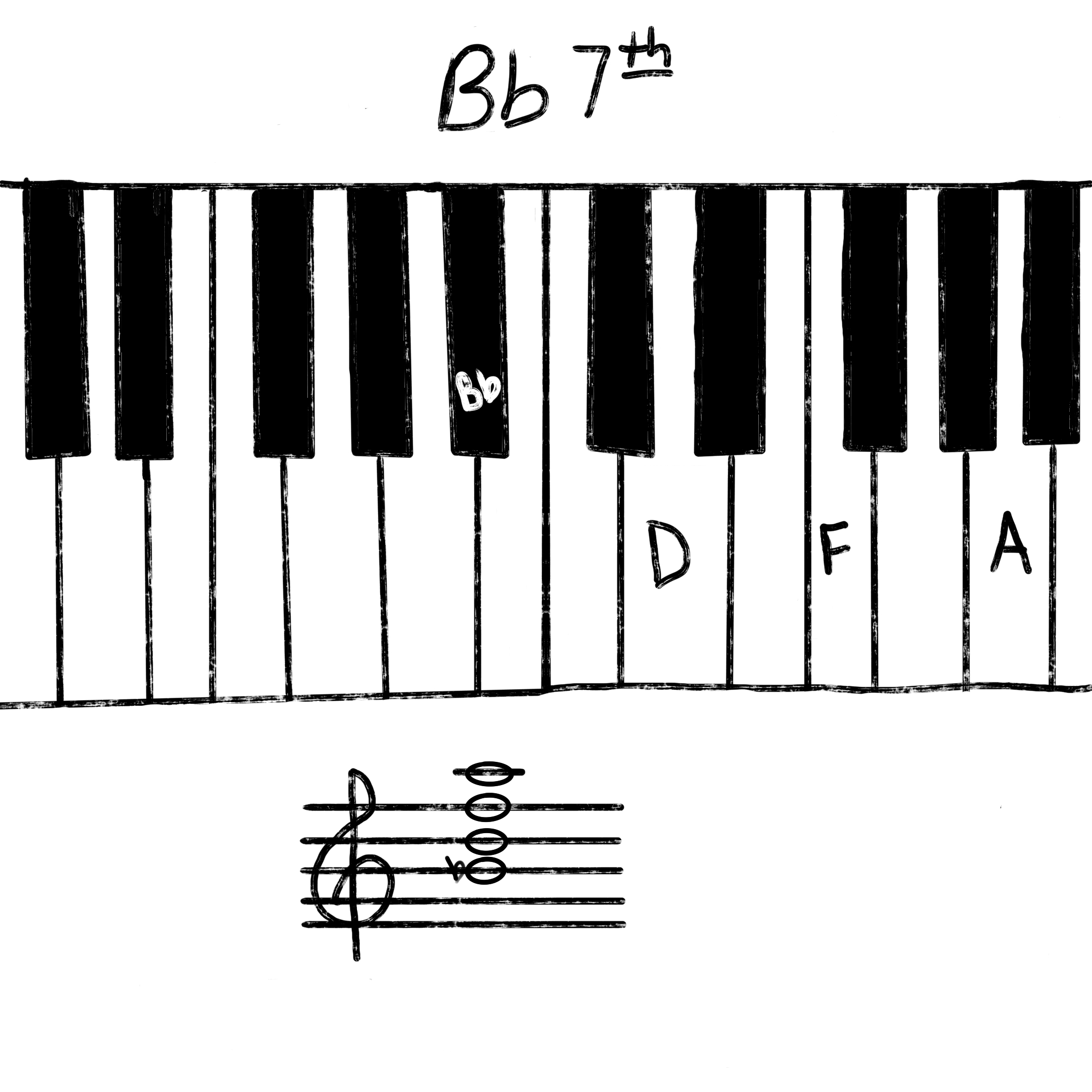

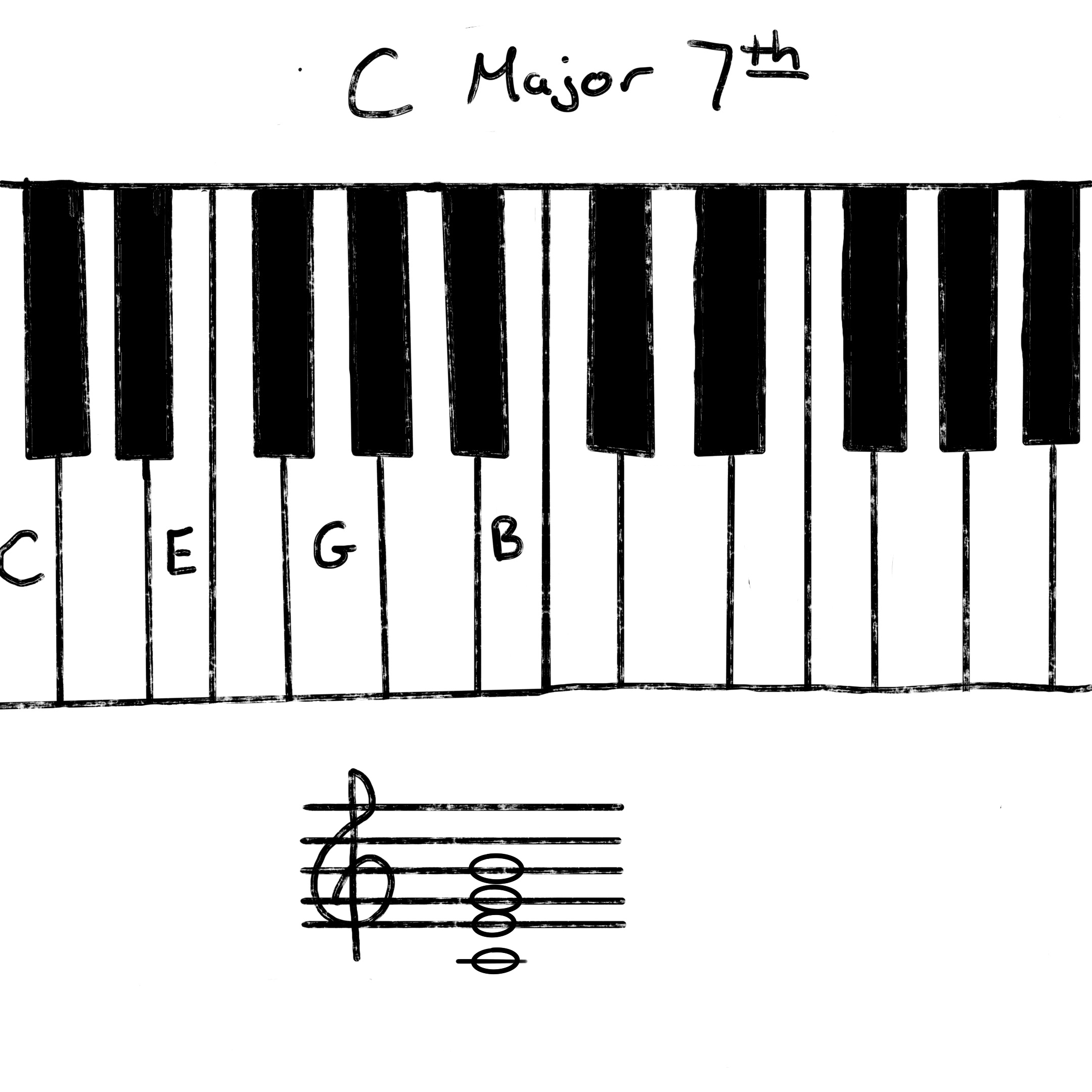
Inversions
Inversions are simply when you play the notes of a chord in a different order. Practicing and learning inversions is good because it really helps hammer in where each note is located on the keyboard in relation to one another. It will also improve your muscle memory when playing.
So, the way inversions work is quite simple. If you want to play a first inversion of a Dm chord, you would take the notes D – F – A. To play a second inversion you would play the notes F – A – D where the D note is in the next highest octave. The third inversion is A – D – F where both the D and F notes are in the next highest octave.
If you are more of a visual learner, this diagram should help you picture inversions a little better.
| Inversion | 1st | 2nd | 3rd |
| Chord Formula | D – F – A | F – A – D | A – D – F |
First Inversion

Second Inversion
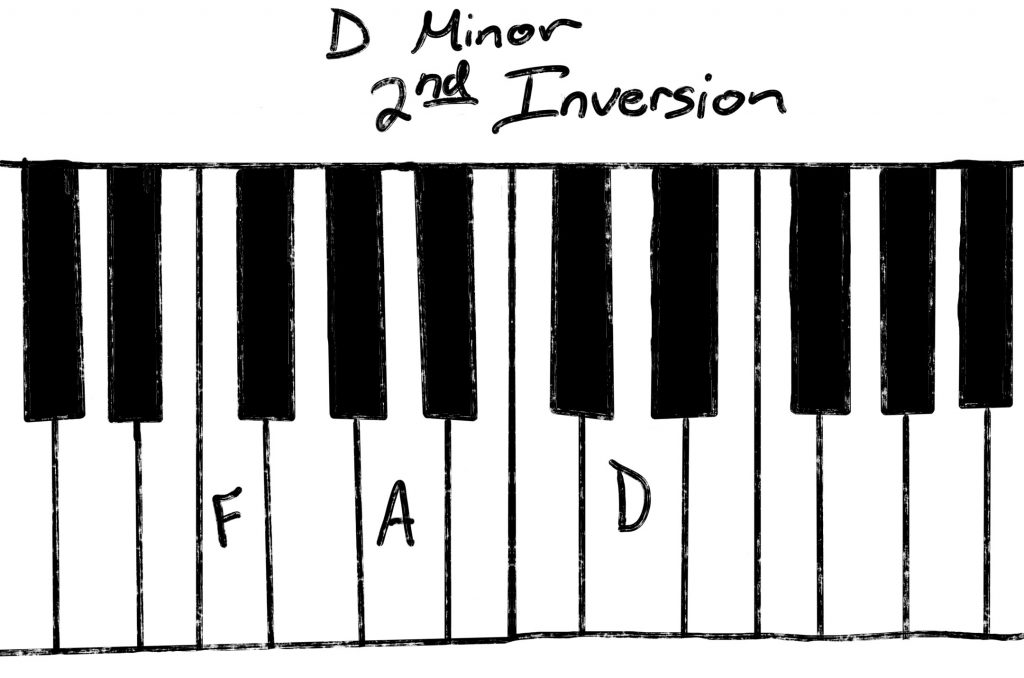
Third Inversion
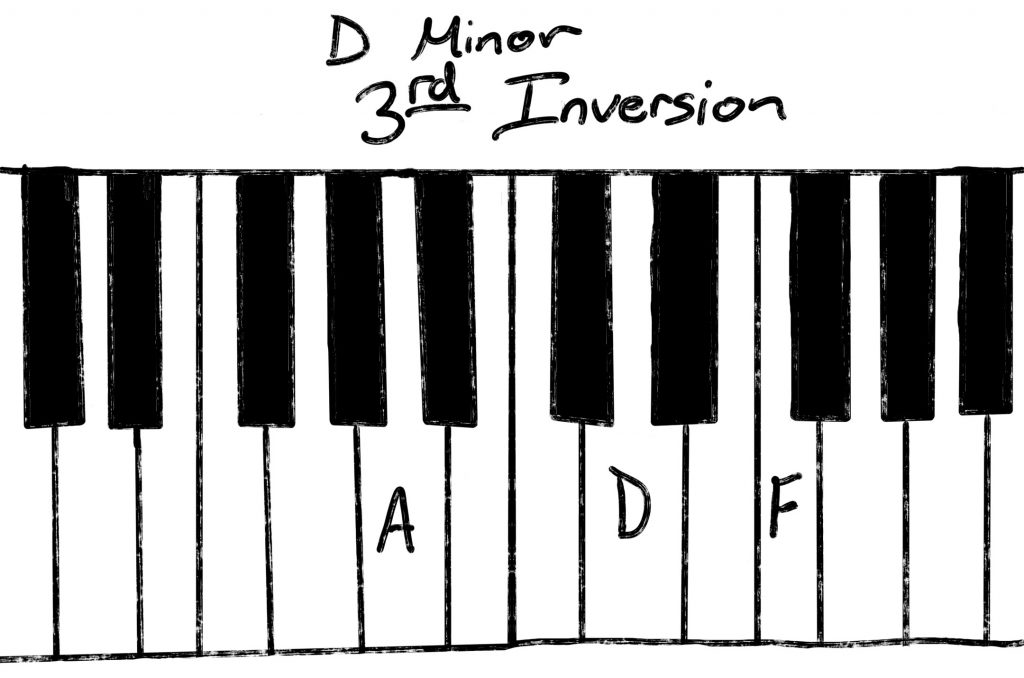
Modified Chords
Next, we will take a look at modified chords. We know the foundation of a chord is a triad, but you can utilize other notes in the scale to change the chord voicing a bit.
add Chords
One of the more commonly used modifications to a chord is add chords. hey are really easy to use. All you do is add a note. Super simple. Let’s take a look at how that would work.
You have likely seen add chords with a number next to them. For example, Dmadd4, or Fadd2, or Cadd13. To get those numbers, we must first assign them to the correct note. Take a look at this chart to give you an idea of how to do that.
You start with your root note and move up the keyboard, labeling as you go.
| 1 | D |
| 2 | E |
| 3 | F |
| 4 | G |
| 5 | A |
| 6 | Bb |
| 7 | C |
| 8 | D |
| 9 | E |
| 10 | F |
| 11 | G |
| 12 | A |
| 13 | Bb |
You will notice the 2, 4, 7, and 13 notes, or E, G, C, and Bb, are all highlighted in bold. That is because those are the most commonly used add chords. In fact, if you have been playing with the chord diagrams above, you have already been playing add7 chords; they’re just usually called 7 chords instead.
Using the chart above, let’s build a Dmadd2 chord. We know that Dm is D – F – A. To make it a Dmadd2 we pull the 2 note from above, which is an E, and add it into the sequence of notes. Our new Dmadd2 chord is D – E – F – A.
It’s that easy, a Dmadd4 is D – F – G – A and Dm7 is D – F – A – C.
Once we hit note 8, they start to repeat. They are the same notes just once octave higher. Which means that Dmadd2 and Dmadd9 both have the same notes, just in a different order. Dmadd2 is still D – E – F – A while Dmadd9 is D – F – A – E. The same holds true for add4/add11 and add6/add13.
You don’t often see add6 or add9 chords. However, they are often combined and are labeled as Dmadd6/9 or Dm6/9; which would look like this D – F – A – Bb – E.
The D Minor Scale
This is how the D minor scale looks on both a keyboard and a music staff.
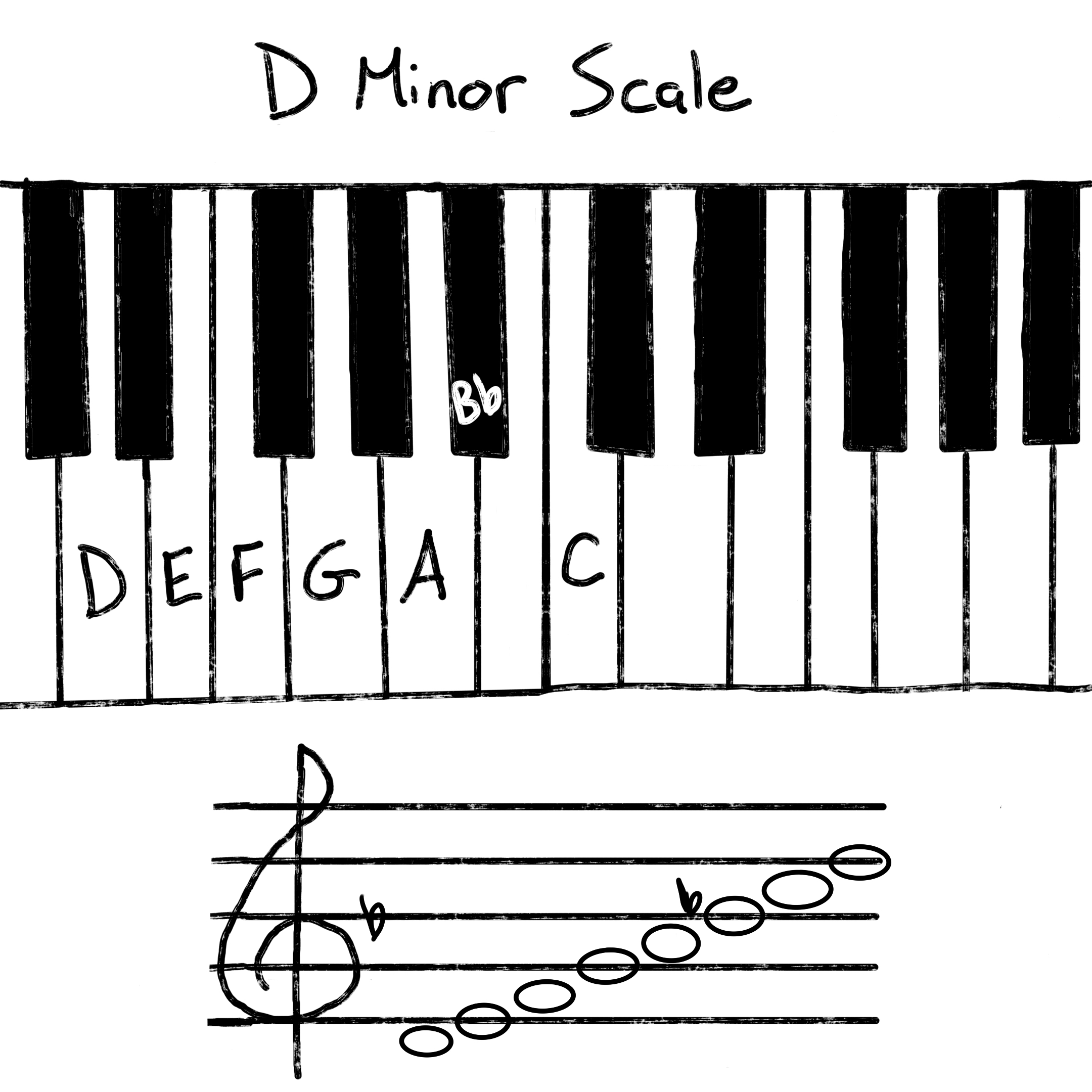
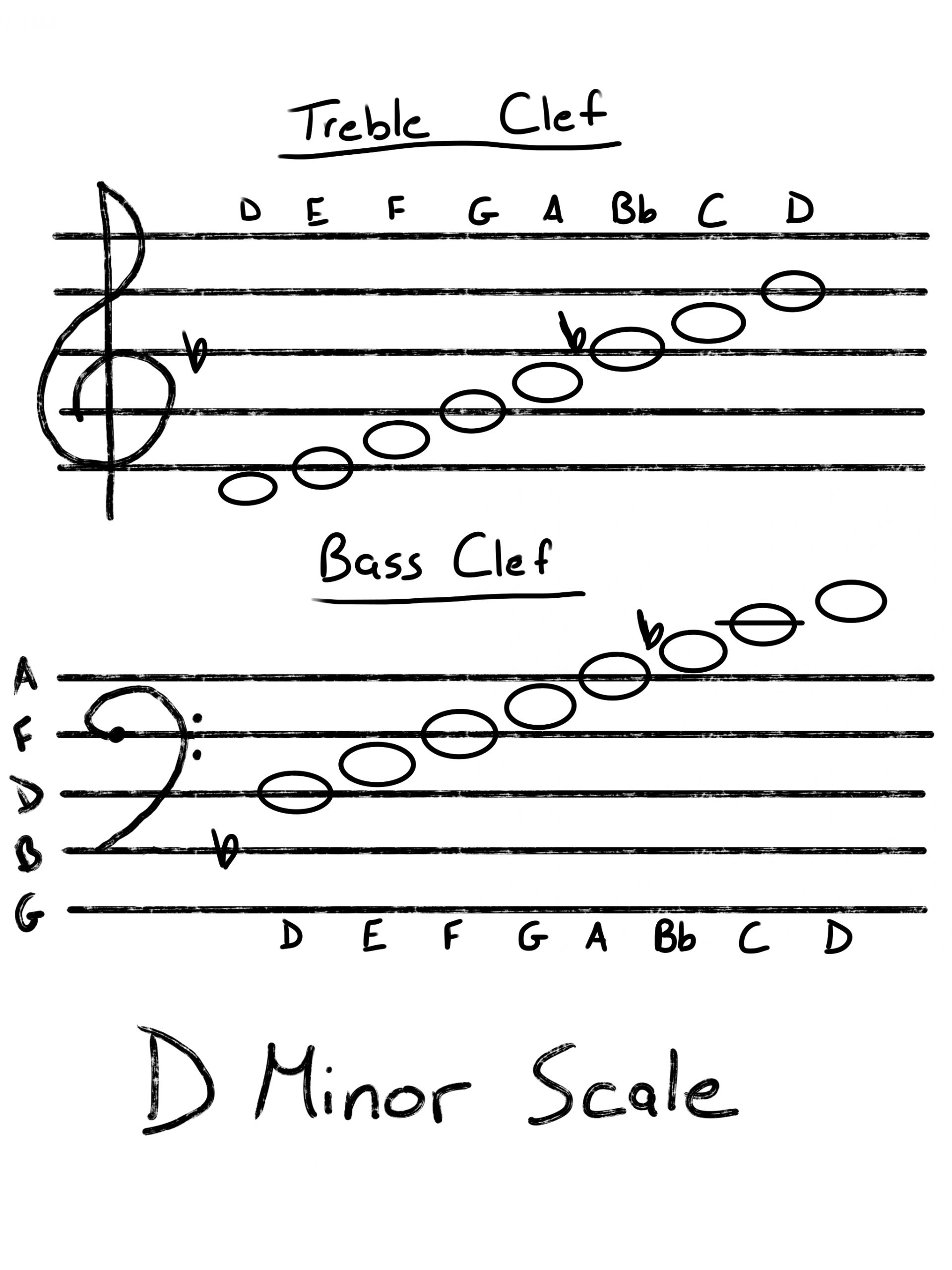
Song In D Minor
To get you started playing with these new chords, here is a whole list of songs in D minor that you may already know!
- If Your Girl Only Knew by Aaliyah
- Crazy by Aerosmith
- Clairvoyant Disease by Avenged Sevenfold
- Unholy Confessions by Avenged Sevenfold
- Toccata and Fugue in D minor, BWV 565 by Johann Sebastian Bach
- Alone Together by Chet Baker
- Not Gon’ Cry by Mary J. Blige
- Dry County by Bon Jovi
- Double Trouble by Eric Clapton
- Time Consumer by Coheed and Cambria
- We Fly So Close by Phil Collins
- Poison by Alice Cooper
- White Room by Cream
- Two Step by Dave Matthews Band
- Blue in Green by Miles Davis
- Punk Rock Girl by The Dead Milkmen
- Black Celebration by Depeche Mode
- Behind the Wheel by Depeche Mode
- Money for Nothing by Dire Straits
- The Ytse Jam by Dream Theater
- Witchy Woman by Eagles
- Ticket to the Moon by Electric Light Orchestra
- Everybody’s Fool by Evanescence
- Ashes to Ashes by Faith No More
- Shock the Monkey by Peter Gabriel
- Doo Wop (That Thing) by Lauryn Hill
- The Number of the Beast by Iron Maiden
- Rainmaker by Iron Maiden
- Bad by Michael Jackson
- Movin’ Out (Anthony’s Song) by Billy Joel
- Wheel in the Sky by Journey
- Level Five by King Crimson
- The Call of Ktulu by Metallica
- Chocolate by Kylie Minogue
- Micro Cuts by Muse
- Hang ’em High by My Chemical Romance
- The Fool by Neutral Milk Hotel
- Polly by Nirvana
- Caribbean Queen (No More Love on the Run) by Billy Ocean
- Mr. Crowley by Ozzy Osbourne
- Between Angels and Insects by Papa Roach
- Now’s the Time by Charlie Parker
- Another Brick in the Wall, Part 2 by Pink Floyd
- Bijou by Queen
- Crazy Little Thing Called Love by Queen
- Knives Out by Radiohead
- Pet Sematary by Ramones
- Bück dich by Rammstein
- Autumn Leaves by Frank Sinatra
- Family Affair by Sly & The Family Stone
- Stop by Spice Girls
- Weak by SWV
- The Patient by Tool
- Forty Six & 2 by Tool
- Desire by U2
- Spanish Fly by Van Halen
- Set Me Free by Velvet Revolver
- Last Christmas by Wham!
- Way Away by Yellowcard
Wrap Up!
Now that you know many new D minor chords, and how to build even more, you can get back to doing what you love; playing music! Hopefully you can use this information to improve your playing and transfer that into your own music.
Good luck and happy playing!